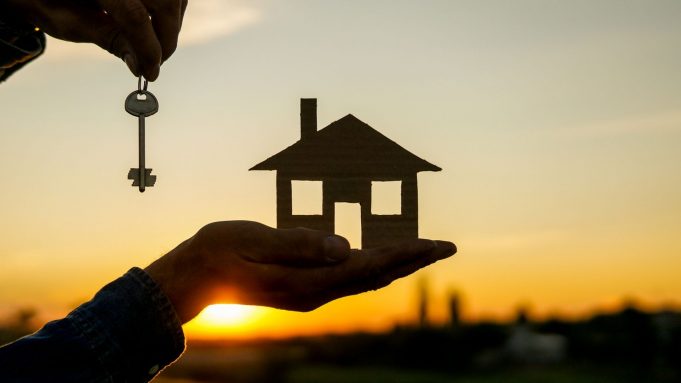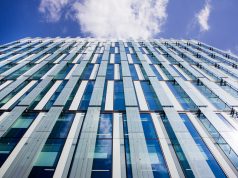Those who are looking to invest in the property market are expected to have a first home already- one in which they live. Investing in a second home should be to generate returns in the long-run and warrant a choice to be made between investing in a buy to let or a holiday let mortgage.
There are other property investment avenues, of course, such as commercial property, land investment and house flipping. Until recently, buying to let had dominated the property investment scene- particularly in the big cities. Holiday Let investments have caught up and whilst largely misunderstood by brokers and home buyers alike, have exciting money-making potential.
Running concurrently with this trend has been the conscious and collective shift towards building an environmentally friendly and eco-conscious society. From sustainable fashion and home furniture to purchasing local produce and making an effort to cut carbon footprints. Welcome to the environmental age of producing less waste and building sustainable cities.
Reason for Green Property real estate investments in Europe (Statista)
30% of respondents reported “attracting tenants” as their most important reason for green investments- a further 29% reported it as their second most important reason. Amongst other reasons were to reduce obsolescence, generate better returns, and attract quality tenants. There is a clear case for eco-proofing your property investment.
There’s no doubt that eco-friendly property is an example of quality in a competitive market. As things stand, your rental investment is largely supported by 74% of millennials who rent today. Couple that with the fact that 73% of millennials are willing to pay more for sustainable products. With thousands of letting options on the market, stand out to the prominent target market by alining your property with their world, centred in sustainability.
With this in mind, it should be noted that the next generation of home buyers and property investors will have this eco-friendly lifestyle deeply embedded in their purchasing decisions. From renters to holidaymakers, they demand a conscious effort to go green. So how does one go about eco-proofing their property investments to ensure high returns?
What makes a property eco-friendly?
The key and typical elements for eco-friendly properties include double glazing, renewable energy appliances and eco-friendly materials. But eco-proofing your property investment doesn’t stop there.
It all begins with the planning and building process of a property. Recently, an increasing number of homes have been constructed using locally sourced green materials– contributing to the reduction of emissions from homes and lowering carbon footprints.
Since most landlords and property investors won’t be building a home from scratch, adjustments can be made to all existing homes to improve their sustainability attributes. Installing solar panels, using other renewable energy, glazing windows and adding insulation to walls, all contribute to raising the EPC rating- which must now reach a minimum of E to be legally let.
10 ways to eco-proof your property investment
1. Partner with sustainable suppliers
You’re not the only party involved in making a property more eco-friendly. Rather the entire supply chain from property construction to maintenance and the little details in between can all be made more sustainable.
Your pre-selection of suppliers can mean the difference between environmentally sustainable wooden furnishings and locally produce foods for guests in your holiday let. Choosing sustainable suppliers to match your own environmental aspirations can help improve your environmental and social standards. Resultantly, situates you and your investment in an elite pool of eco-conscious properties, away from the competition.
Evaluate the environmental and social performance of a supplier before you sign any contracts for their goods or services. You may decide upon a pre-qualification questionnaire to test the supplier’s ability to meet your standards for environmental issues. In such questionnaire, ask suppliers about the following:
- Their compliance with environmental legislation
- Their environmental management practices
- Their product’s environmental impact- i.e its manufacturing, waste, packaging
- Their buying practices and partners
- Social responsibility practices
2. Invest in Sustainable Interior Design
Using sustainable materials for the interior decoration of your investment property is only one aspect of sustainable interior design. Designers are embracing a life-cycle approach when selecting materials for the use in new and renovated interiors.
Design for energy efficiency to reduce the amount of energy needed for heating, lighting and running appliances. Combine this by providing renewable, non-carbon energy to the building. Energy consumption is one of the biggest culprits of climate change and buildings are responsible for a great share of the world’s greenhouse gas emissions.
The interior design of a building can possess direct control over the heating and lighting. Curtains and drapes not only possess design functionality but they also provide good insulation. They both keep cold air and the sun’s hot air outside. The same is true of shutters, blinds and shade, as residents can use them to control the temperature of the building in an energy-efficient way.
Carpets and tapestry have a long history in interior design around the world. They’re also excellent thermal insulators since they retain as much as 10% of a room’s heat. Not to mention their capacity to trap dust particles and improve the room’s air quality.
Organic materials such as wood, natural stone and straw are clear examples of materials with low environmental impact. It should be noted that the sourcing of these natural materials come into play. Choosing renewable materials that are extracted in environmentally responsible ways is key. Bamboo is highly renewable, for example- but do consider it’s transportation costs on the environment.
Certifications and standards on labels should give credible information on the origin of the product to help you identify eco-friendly products. Be sure to check out the FSC label on wood to ensure a sustainable harvest.
3. Minimise paper waste
In today’s digital age, there are no excuses not to cut paper waste. From communicating with clients and suppliers to advertising your property; utilise the digital realm for communication and marketing.
4. Advertise your green property
As an investor, you’ll be looking to make a return. Meaning, you’ll need buyers, tenants or guests paying to utilise your property. As previously discussed, the importance of environmental sustainability is on the rise and shouldn’t be neglected. Be sure to market your property with all its green features to truly maximise interest and profits. Erikas Grig specialist commercial agency says “There is a great deal of interest from investors and occupiers for energy efficient commercial properties. Highly efficient properties tend to attract longer staying tenants and overall better perform as an investment in the long-term”.
Most online property platforms allow landlords and second homeowners to describe the key attractive features of their property to help close deals. Don’t neglect this opportunity to highlight your properties interior, exterior and supply chain eco-conscious presence.
5. Promote eco-conscious choices
One of the easiest ways to prompt your tenants and guests to make environmentally-friendly life choices is to give them a choice. Designing your property to include a separate workspace, a small gym area or a private room for reading or entertainment can reduce the need for lengthy commutes.
Whilst, not all properties will have the capacity for additional rooms, dividing one room into sections for different uses might be all that’s required to encourage people to avoid public transport or make long drives elsewhere.
6. Eco-Finances
Think strategically about how you will fund your investment. For a truly eco-proof property investment, you’ll be considering your environmental impact from the get-go. Some ethical building societies specifically specialise in mortgages for properties that will benefit local communities. Ecology Building Society, for example, will help you plan an eco renovation, refurb or eco new build.
The rest of the capital lending market are jumping on the sustainability waggon. One of the UK’s leading non-bank property lenders recently launched its first green finance initiative. It allows borrowers to have the most positive environmental impact by promoting higher than average EPC ratings on the rental properties it backs.














